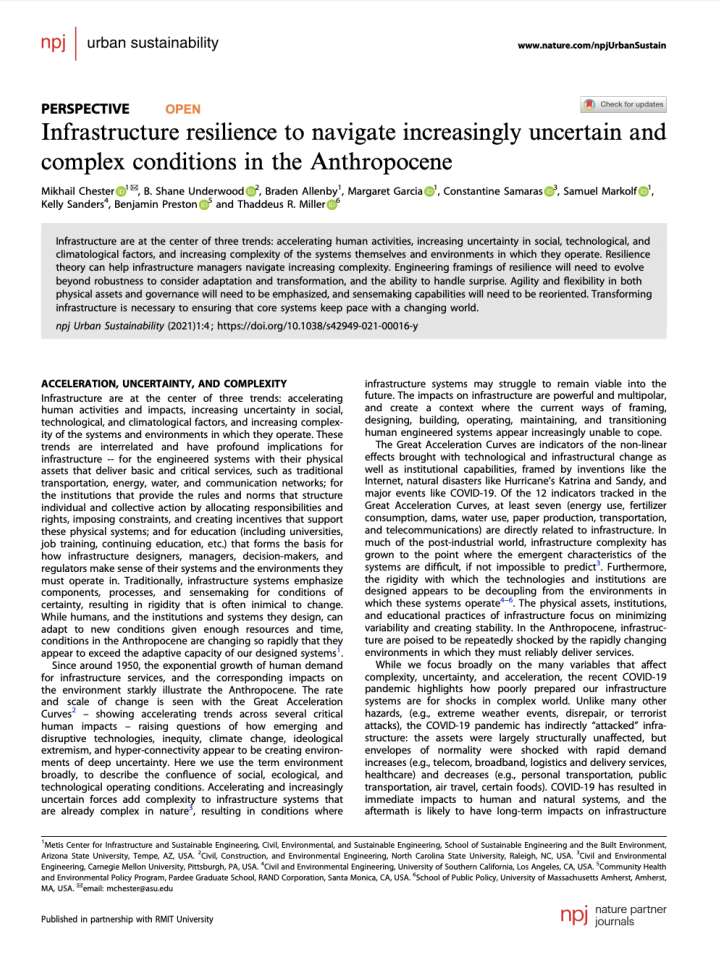Infrastructure resilience to navigate increasingly uncertain and complex conditions in the Anthropocene
This paper examines infrastructure resilience to navigate increasingly uncertain and complex conditions in the Anthropocene. Infrastructure are at the center of three trends: accelerating human activities, increasing uncertainty in social, technological, and climatological factors, and increasing complexity of the systems themselves and environments in which they operate. Resilience theory can help infrastructure managers navigate increasing complexity. Engineering framings of resilience will need to evolve beyond robustness to consider adaptation and transformation, and the ability to handle surprise. Agility and flexibility in both physical assets and governance will need to be emphasized, and sensemaking capabilities will need to be reoriented. Transforming infrastructure is necessary to ensuring that core systems keep pace with a changing world.
The paper finds that the restructuring of infrastructure technologies, governance, and education to build resilience capacity for the emerging challenges of the Anthropocene is a monumental but necessary undertaking. The systems that we rely on today will stay relevant for some time, but are likely to increasingly become incapable of responding to the rapidly changing conditions of the future. The transformations discussed are aligned with the adaptive and transformative capabilities central to resilience theory, and support engineered systems’ ability to respond to foreseen and unforeseen conditions. Positioning resilience as a guiding framework for infrastructure is critical to ensuring that basic and critical needs are met into the future, as demands and environments change.
Explore further
